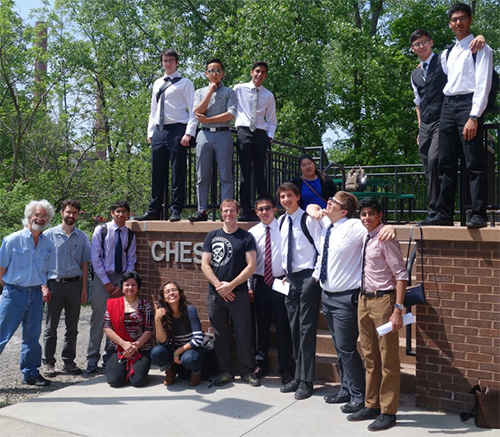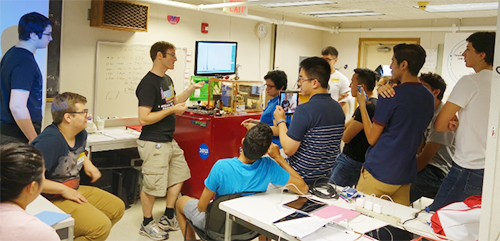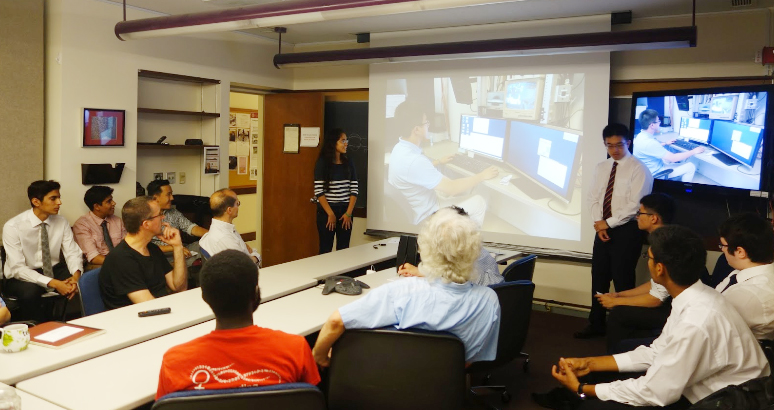X-RAY RUNS: Apply for Beamtime
2017 Nov 1 - Dec 21
2018 Feb 7 - Apr 3
2018 Proposal/BTR deadline: 12/1/17
2018 Apr 11 - Jun 4
2018 Proposal/BTR deadline: 2/1/18
During the last week of May, twelve high school students and two high school teachers visited CHESS from Oakville, Ontario. The Integrated Science Club from Appleby College travelled hundreds of miles to the United States to spend three days analyzing specimens using X-ray Fluorescence at our facility.

Using the same proposal system used by professional research scientists, these aspiring teens submitted a research proposal for beam time in our F3 station with staff scientist Arthur Woll. The students were interested in the presence of metals in the soil in and around the school’s greenhouse, specifically, what metals were taken up by plants and trees growing nearby. Samples included a collection of wood from a Maple tree.
Like many of the scientists here, most of their time focused around data collection and analysis. With the help of Post Doctoral Researcher Matt Ward and staff scientist Arthur Woll, they took advantage of the portable X-ray Fluorescence detector (XRF) stationed in the eXploration station.

Matt introduced the group to the basics of x-ray fluorescence, specifically how to identify elements from the spectrograph, as well as the advantages and limitations of the technique. Matt and Arthur enjoyed a series of detailed discussions with the students about XRF and experimental design, and were deeply impressed with the degree of preparation, engagement, and attention to detail displayed by the group. Subsequently, students spent several hours assiduously preparing and then measuring several dozen wood samples collected from areas near their school and homes back in Oakville. The group then exported these results to disk and spent Thursday evening analyzing their data. Although these data were obtained solely with the portable XRF machine, the results and students’ experience provide an excellent basis for future work.
In addition to their research, students met with Richard Gillilan to learn about BioSAXS techniques, including size exclusion, a method used to separate proteins at the beamline. The students quantified the amount of dilution samples experience with various tubing configurations. The Appleby students also tested the reliability of sample loading of a microfluidic chip using the G1 station’s robotic arm.

On the last day of their visit, to the delight of scientists at our senior staff meeting, the students presented their experimental results. We look forward to next year’s visit from Appleby, with even better samples and use of our positron beam.
Submitted by: Lora Hine, CHESS, Cornell University
06/09/2015
